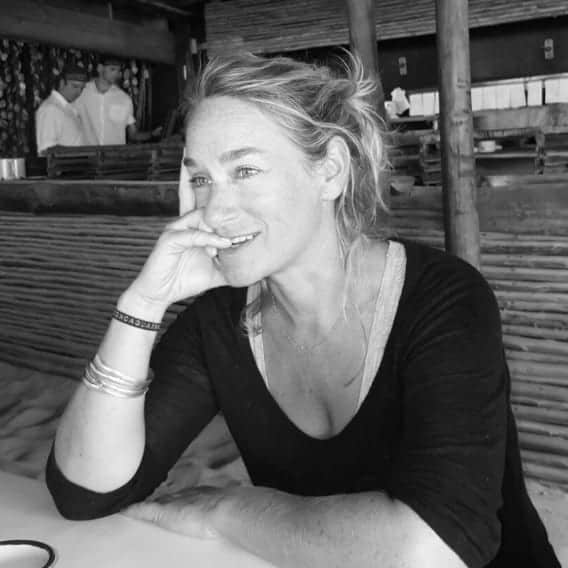
Holly Padove, CAS, is a Clinical Ayurvedic Specialist and lifelong seeker of balance. With a foundation in Yoga and meditation inspired by Paramahansa Yogananda, Holly’s journey has spanned decades of exploration into Ayurveda, Qi Gong, Yoga Nidra, and holistic health. Certified through the California College of Ayurveda, Holden Qi Gong, Prema Yoga and Robbins Madanes Life Coaching, she offers personal consultations, workshops, and retreats worldwide. Based on California’s Central Coast, Holly integrates her love for nature, travel, and sustainable living into her practice, fostering well-being and harmony for her clients. MysticMag offers you an exclusive interview.
Balanced Living offers a combination of Ayurvedic consultations, Qi Gong, Yoga classes, and international retreats. How do you integrate these ancient practices to create a cohesive wellness program for your clients?
I find that these practices complement each other beautifully. For instance, Ayurveda is often regarded as the healing side of yoga. Both Yoga and Qi Gong incorporate movements designed to release stress and tension from the body. In Ayurveda, we understand that 90% of diseases, illnesses, or imbalances originate from stress. By integrating practices like Yoga and Qi Gong to clear stagnant or old energy from the body, we effectively support and enhance the Ayurvedic healing process.
With a background in the Healing Arts since 1991, what inspired you to specialize in Ayurveda and incorporate it into your practice at Balanced Living?
I began my journey into the healing arts around 1991, or perhaps even earlier, starting with a meditation practice. At the time, my career was in an entirely different field, but as I approached my mid to late 20s, I developed a deep interest in the healing arts. From meditation, I ventured into massage therapy, gradually adding more “feathers to my cap,” so to speak.
The meditation practice I originally practiced was rooted in the teachings of Paramahansa Yogananda, which beautifully combined meditation with yoga. (I still practice this style of meditation along with Buddhist practices today). Around that same period, I also found myself exploring nutrition purely out of curiosity. Life, however, brought me to a crossroads—while going through a divorce and approaching my 40s, I found myself reevaluating my path and the direction I wanted my life to take.
At that point, I was running a PR business while practicing massage and engaging in other healing practices on the side. Then, serendipitously, I picked up a book on Ayurveda. It was a turning point—a true “aha” moment. As I read about Ayurveda, I realized it wove together everything I was already passionate about: yoga, meditation, herbs, nutrition, and holistic wellness. It became abundantly clear that this was the direction I was meant to pursue.
In 2004, I enrolled in The California College of Ayurveda to formally study Ayurveda, and that marked the beginning of my journey into this incredible field. Looking back, I see how moments of crisis or major life transitions, like my divorce, can act as catalysts for profound change. As the saying goes, “When one door closes, another opens,” and for me, that open door led to a deeply fulfilling and transformative path.
Your consultations aim to help clients discover their constitution and create optimal conditions for healing. Can you elaborate on how you tailor wellness plans to meet the unique needs of each individual?
In Ayurveda, we recognize that every individual is unique, which is why a “one-size-fits-all” approach to diet or wellness simply doesn’t work. Unlike generic programs that advocate the latest trend, like keto or other diets, Ayurveda tailors recommendations to each person’s specific needs. This starts with a comprehensive assessment where I ask detailed questions, evaluate the pulse, examine the tongue, and perform an overall body analysis. Through this process, I identify a person’s prakriti—their innate constitution, or body-mind type, which remains constant throughout their life—and uncover any vikruti, or imbalances, that need to be addressed.
The first step in Ayurveda is almost always diet, because food is viewed as medicine. What you eat and how you eat play a foundational role in improving health. From there, we delve into other areas such as lifestyle adjustments, exercise routines, essential oils, aromatherapy, color therapy, and daily rituals—all designed to restore balance. However, it’s crucial to make gradual changes. Habits take time to shift, so we take small, manageable steps, building on each success. My role is part teacher, part coach, and part mentor, helping clients navigate this process at their own pace.
Ayurveda identifies three primary body-mind types, or doshas: Vata, Pitta, and Kapha. Everyone has a combination of these, but one or two are typically dominant. For instance, if someone has a Vata imbalance, they may feel dry, cold, or anxious. To balance this, I’d recommend foods that are moist, grounding, and warm—perhaps cooked grains or nourishing stews. On the other hand, someone with a Pitta imbalance, who might experience heat, acidity, or irritability, would benefit from cooling, calming foods like cucumbers or salads, while avoiding heating foods such as spicy curries, coffee, or alcohol.
Every recommendation is customized, because the path to balance looks different for everyone. By addressing imbalances through diet first, and then gradually integrating other lifestyle changes, Ayurveda offers a truly holistic and personalized approach to well-being.
Balanced Living offers seasonal Ayurvedic workshops and small, friendly Yoga or Qi Gong classes. How do these community-focused events contribute to the overall mission of promoting balanced living?
I believe it provides a supportive environment for people, especially for those who might find it challenging to practice Yoga or Qigong on their own. Qigong, which can be described as mindful movements—sort of like a blend of Tai Chi and yoga—is often more accessible for people looking for a gentler approach. This might appeal to a different audience compared to traditional yoga.
To answer your question, creating this kind of environment offers participants the opportunity to learn, thrive, and connect with a like-minded community. Practicing together not only fosters a sense of belonging but also reinforces their commitment to wellness. Additionally, it complements and supports any Ayurvedic lifestyle choices they may adopt, providing a holistic framework to enhance their overall well-being.
You host destination retreats that combine Yoga, Qi Gong, and Meditation. Could you share some insights into how these retreats have impacted participants’ journeys toward health and wellness?
Retreats serve a unique purpose by pulling you out of your everyday reality. Whether it’s a yoga retreat, a QiGong retreat, an Ayurveda retreat, or a combination of all three—which is what I offer—they allow you to immerse yourself deeply in these practices. Instead of practicing sporadically, as most people do, you’re engaging in them multiple times a day. This consistent focus helps you to dive deeper and truly experience the benefits.
Additionally, being in a completely different environment gives you a “bird’s-eye view” of your life. It creates the space for clarity, helping you step back and reflect. This distance from your daily routine often leads to those transformative “aha” moments, where you can better recognize what’s working in your life and what isn’t. Retreats not only nourish your body and mind but also offer the insight and perspective needed to make meaningful changes.
If you would like to find out more about Holly Padove, please visit https://balancedlivingayurveda.com/



